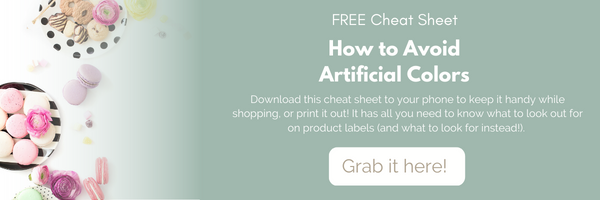From sodas to candies and snack foods and salad dressings to medicines, artificial colors are everywhere! In this podcast episode, we’ll dive into the alarming statistics, including a 500% surge in the use of artificial colors over the past 50 years and their direct correlation to increasing health concerns.
Why are these dyes more strictly regulated in Europe compared to the US? What’s the relationship between artificial food dyes and children’s neurobehavioral health? We’ll answer these questions and more, including other health effects such as their link to inflammatory bowel diseases, immune issues, and cancer.
Then, we’ll share ways to spot these hidden threats on labels, plus simple tips for how to limit your family’s exposure to these synthetic colors.
It’s not always easy to spot artificial colors on labels, as they often hide behind different names, such as Allura Red AC for Red 40, but after this episode, you’ll be a label-reading pro!
Links mentioned in this episode:
Naturally Colored Sprinkles & Food Colors
Membership: Slightly Greener Living
Free Facebook group: The Slightly Greener Community
For a list of over 100 safer products (foods, beverages, personal care products, and cleaning products, grab my book, The Slightly Greener Method: Detoxing Your Home is Easier, Faster, & Less Expensive Than You Think, here (or anywhere books are sold!).
Sources:
Artificial food colors and attention-deficit/hyperactivity symptoms: conclusions to dye for
Immune reactivity to food coloring
Genotoxicity: damage to DNA and its consequences
Common food dye can trigger inflammatory bowel diseases, animal study suggests

